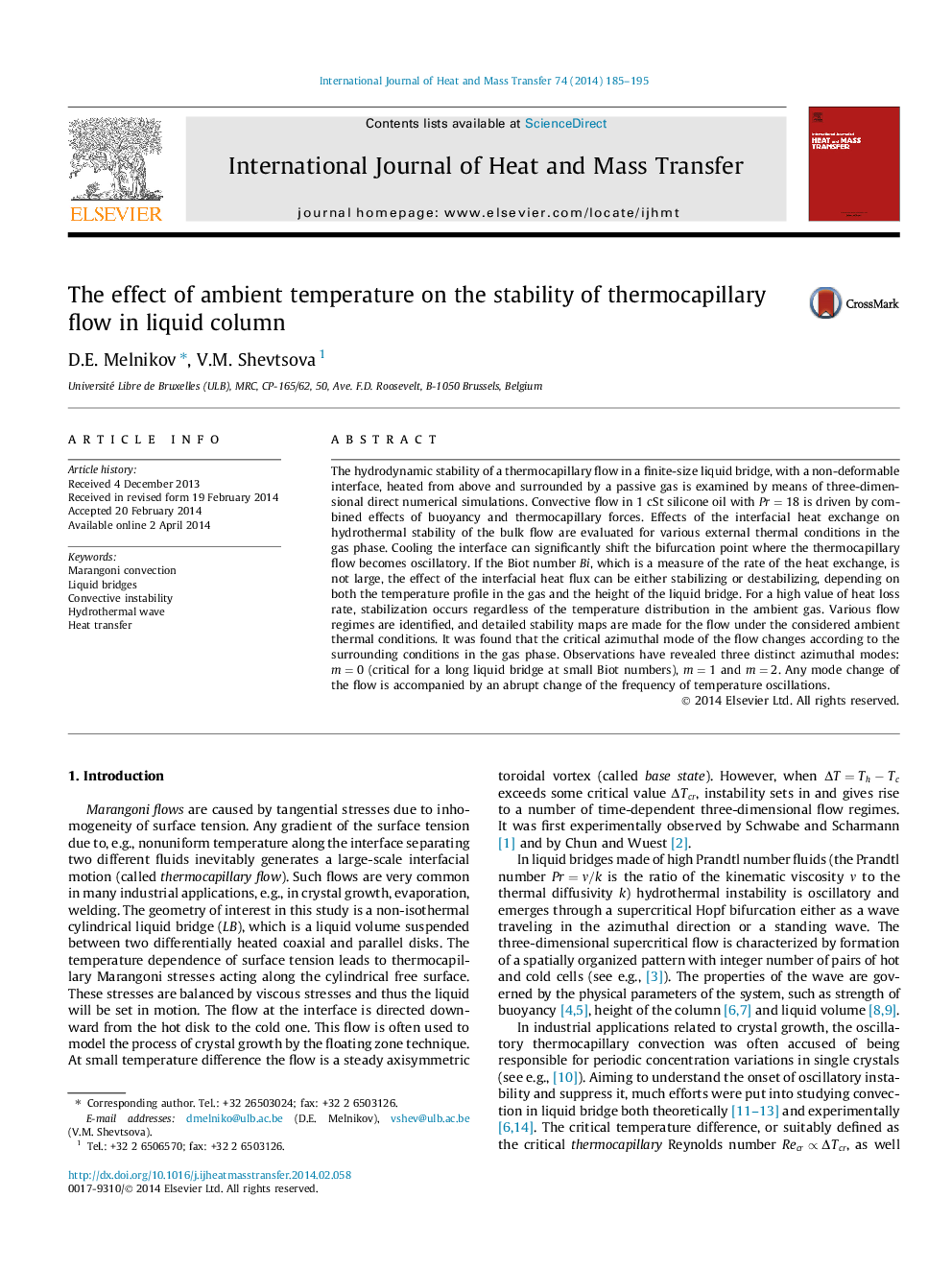| کد مقاله | کد نشریه | سال انتشار | مقاله انگلیسی | نسخه تمام متن |
|---|---|---|---|---|
| 657886 | 1458068 | 2014 | 11 صفحه PDF | دانلود رایگان |
The hydrodynamic stability of a thermocapillary flow in a finite-size liquid bridge, with a non-deformable interface, heated from above and surrounded by a passive gas is examined by means of three-dimensional direct numerical simulations. Convective flow in 1 cSt silicone oil with Pr=18Pr=18 is driven by combined effects of buoyancy and thermocapillary forces. Effects of the interfacial heat exchange on hydrothermal stability of the bulk flow are evaluated for various external thermal conditions in the gas phase. Cooling the interface can significantly shift the bifurcation point where the thermocapillary flow becomes oscillatory. If the Biot number Bi , which is a measure of the rate of the heat exchange, is not large, the effect of the interfacial heat flux can be either stabilizing or destabilizing, depending on both the temperature profile in the gas and the height of the liquid bridge. For a high value of heat loss rate, stabilization occurs regardless of the temperature distribution in the ambient gas. Various flow regimes are identified, and detailed stability maps are made for the flow under the considered ambient thermal conditions. It was found that the critical azimuthal mode of the flow changes according to the surrounding conditions in the gas phase. Observations have revealed three distinct azimuthal modes: m=0m=0 (critical for a long liquid bridge at small Biot numbers), m=1m=1 and m=2m=2. Any mode change of the flow is accompanied by an abrupt change of the frequency of temperature oscillations.
Journal: International Journal of Heat and Mass Transfer - Volume 74, July 2014, Pages 185–195
